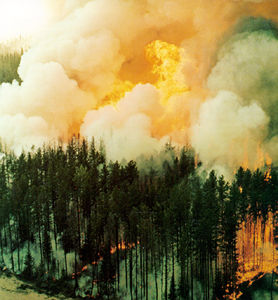Article
Field Pea
SeePEA.

Enter your search term
Signing up enhances your TCE experience with the ability to save items to your personal reading list, and access the interactive map.
Create Account"https://www.thecanadianencyclopedia.ca/images/tce_placeholder.jpg?v=e9dca980c9bdb3aa11e832e7ea94f5d9" // resources/views/front/categories/view.blade.phphttps://www.thecanadianencyclopedia.ca/images/tce_placeholder.jpg?v=e9dca980c9bdb3aa11e832e7ea94f5d9

Article
Fir, Scandinavian for "pine," designates the "true" firs, which are evergreen conifers (genus Abies) of the pine family (Pinaceae). About 50 species occur worldwide, all in the Northern Hemisphere; 4 are native to Canada. Balsam fir (A. balsamea) occurs from Alberta to the Atlantic Provinces.
"https://www.thecanadianencyclopedia.ca/images/tce_placeholder.jpg?v=e9dca980c9bdb3aa11e832e7ea94f5d9" // resources/views/front/categories/view.blade.phphttps://www.thecanadianencyclopedia.ca/images/tce_placeholder.jpg?v=e9dca980c9bdb3aa11e832e7ea94f5d9

Article
Fireweed, common name for Epilobium angustifolium, a member of a genus of herbaceous or shrubby plants of the evening primrose family (Onagraceae).
"https://d3d0lqu00lnqvz.cloudfront.net/media/media/a4b74f70-c61f-4cfe-a857-0848e3cb40bd.jpg" // resources/views/front/categories/view.blade.phphttps://d3d0lqu00lnqvz.cloudfront.net/media/media/a4b74f70-c61f-4cfe-a857-0848e3cb40bd.jpg

Article
Forage refers to plants consumed by animals, particularly livestock. Forage may be preserved by drying the plants to produce hay, it may be fermented to produce silage, and dried material is also compressed to produce compacted hay, pellets, and cubes .
"https://d3d0lqu00lnqvz.cloudfront.net/media/Twitter_Cards/Saskatchewan storm.jpg" // resources/views/front/categories/view.blade.phphttps://d3d0lqu00lnqvz.cloudfront.net/media/Twitter_Cards/Saskatchewan storm.jpg

Article
A forest is an ecosystem characterized by a dense and extensive tree cover. It includes not only trees but also shrubs, vines, herbs, mosses, microorganisms, insects, and vertebrate animals that interact with each other and with their environment. This complex pattern of life is a system in delicate balance. Natural or human-caused alterations may trigger far-reaching and sometimes disastrous changes.
"https://d3d0lqu00lnqvz.cloudfront.net/forest/Spruce-Forest-in-Winter.jpg" // resources/views/front/categories/view.blade.phphttps://d3d0lqu00lnqvz.cloudfront.net/forest/Spruce-Forest-in-Winter.jpg

Article
Container seedlings such as this white spruce are grown in greenhouses and planted in March or June (courtesy Alberta Forest Service).Forest Economics FOREST economics is the application of economic principles to a wide range of subjects extending from management of the various forest resources through the processing, marketing and consumption of forest products. Forest economics has much in common with AGRICULTURAL ECONOMICS, but although the latter discipline has an established academic history in Canada, no...
"https://www.thecanadianencyclopedia.ca/images/tce_placeholder.jpg?v=e9dca980c9bdb3aa11e832e7ea94f5d9" // resources/views/front/categories/view.blade.phphttps://www.thecanadianencyclopedia.ca/images/tce_placeholder.jpg?v=e9dca980c9bdb3aa11e832e7ea94f5d9

Article
A forest fire is a moving combustion reaction, spreading outwards in a band from its ignition point, leaving burned-out forest behind it. On average, about 6,000 forest fires occur annually in Canada.
"https://d3d0lqu00lnqvz.cloudfront.net/media/media/645e8e08-17c5-4cc5-8a68-b25c913f441c.jpg" // resources/views/front/categories/view.blade.phphttps://d3d0lqu00lnqvz.cloudfront.net/media/media/645e8e08-17c5-4cc5-8a68-b25c913f441c.jpg

Article
Forest harvesting involves cutting trees and delivering them to sawmills, pulp mills and other wood-processing plants. Its practical components include road construction, logging and log transportation.
"https://d3d0lqu00lnqvz.cloudfront.net/media/media/8b0c97bf-7642-4d5a-9eff-4010192da77d.jpg" // resources/views/front/categories/view.blade.phphttps://d3d0lqu00lnqvz.cloudfront.net/media/media/8b0c97bf-7642-4d5a-9eff-4010192da77d.jpg

Article
A forest region is a major geographic belt or zone characterized by a broad uniformity both in physiography and in the composition of the dominant tree species. Canada can be divided into eight forest regions.
"https://d3d0lqu00lnqvz.cloudfront.net/media/media/b56c04a4-f128-4027-93d9-f3a9c96c6632.jpg" // resources/views/front/categories/view.blade.phphttps://d3d0lqu00lnqvz.cloudfront.net/media/media/b56c04a4-f128-4027-93d9-f3a9c96c6632.jpg

Article
Foresters use forest surveys to obtain information on the condition of the FOREST and monitor any changes, since there are not only surveys of standing trees, but also surveys after logging as well as forestry surveys aimed at prescribing treatments.
"https://www.thecanadianencyclopedia.ca/images/tce_placeholder.jpg?v=e9dca980c9bdb3aa11e832e7ea94f5d9" // resources/views/front/categories/view.blade.phphttps://www.thecanadianencyclopedia.ca/images/tce_placeholder.jpg?v=e9dca980c9bdb3aa11e832e7ea94f5d9

Article
Forestry is the science and practice of caring for forests. Both the meaning and practice of forestry in Canada have evolved over time.
"https://d3d0lqu00lnqvz.cloudfront.net/media/media/e919b19c-7ba7-46cc-9c8e-d6867c26a6f7.jpg" // resources/views/front/categories/view.blade.phphttps://d3d0lqu00lnqvz.cloudfront.net/media/media/e919b19c-7ba7-46cc-9c8e-d6867c26a6f7.jpg

Article
Throughout the late 1980s and the 1990s, there was a tremendous evolution of FORESTRY in Canada and around the world. Forestry became increasingly important for both the ECONOMY and the ENVIRONMENT, and the practice of forestry became more complex.
"https://www.thecanadianencyclopedia.ca/images/tce_placeholder.jpg?v=e9dca980c9bdb3aa11e832e7ea94f5d9" // resources/views/front/categories/view.blade.phphttps://www.thecanadianencyclopedia.ca/images/tce_placeholder.jpg?v=e9dca980c9bdb3aa11e832e7ea94f5d9

Article
Several plants of family Gentianaceae, of the genus Gentiana, are commonly known as gentian.
"https://thecanadianencyclopedia.ca/images/tce_placeholder.jpg?v=e9dca980c9bdb3aa11e832e7ea94f5d9" // resources/views/front/categories/view.blade.phphttps://thecanadianencyclopedia.ca/images/tce_placeholder.jpg?v=e9dca980c9bdb3aa11e832e7ea94f5d9

Article
Geranium, annual, biennial or perennial plant of genus Geranium, family Geraniaceae, with opposite, palmate and often divided leaves.
"https://www.thecanadianencyclopedia.ca/images/tce_placeholder.jpg?v=e9dca980c9bdb3aa11e832e7ea94f5d9" // resources/views/front/categories/view.blade.phphttps://www.thecanadianencyclopedia.ca/images/tce_placeholder.jpg?v=e9dca980c9bdb3aa11e832e7ea94f5d9

Article
Ginseng is a herbaceous perennial plant of genus Panax, ginseng family (Araliaceae), discovered in North America by Joseph-François Lafitau.
"https://www.thecanadianencyclopedia.ca/images/tce_placeholder.jpg?v=e9dca980c9bdb3aa11e832e7ea94f5d9" // resources/views/front/categories/view.blade.phphttps://www.thecanadianencyclopedia.ca/images/tce_placeholder.jpg?v=e9dca980c9bdb3aa11e832e7ea94f5d9
